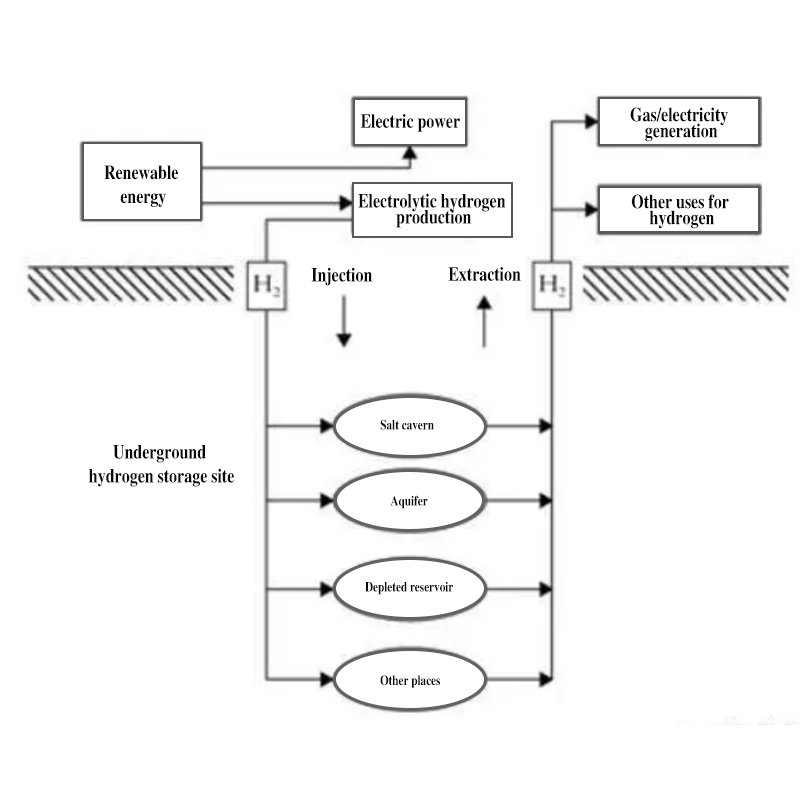- English
- Español
- Português
- русский
- Français
- 日本語
- Deutsch
- tiếng Việt
- Italiano
- Nederlands
- ภาษาไทย
- Polski
- 한국어
- Svenska
- magyar
- Malay
- বাংলা ভাষার
- Dansk
- Suomi
- हिन्दी
- Pilipino
- Türkçe
- Gaeilge
- العربية
- Indonesia
- Norsk
- تمل
- český
- ελληνικά
- український
- Javanese
- فارسی
- தமிழ்
- తెలుగు
- नेपाली
- Burmese
- български
- ລາວ
- Latine
- Қазақша
- Euskal
- Azərbaycan
- Slovenský jazyk
- Македонски
- Lietuvos
- Eesti Keel
- Română
- Slovenski
- मराठी
- Srpski језик
The world's first underground hydrogen storage project is here
2023-05-11
On May 8, Austrian RAG launched the world's first underground hydrogen storage pilot project at a former gas depot in Rubensdorf. The pilot project will store 1.2 million cubic meters of hydrogen, equivalent to 4.2 GWh of electricity. The stored hydrogen will be produced by a 2 MW proton exchange membrane cell supplied by Cummins, which will initially operate at base load to produce enough hydrogen for storage. Later in the project, the cell will operate in a more flexible manner to transfer excess renewable electricity to the grid.
As an important milestone in the development of a hydrogen economy, the pilot project will demonstrate the potential of underground hydrogen storage for seasonal energy storage and pave the way for large-scale deployment of hydrogen energy. While there are still plenty of challenges to overcome, this is certainly an important step towards a more sustainable and decarbonized energy system.
Underground hydrogen storage, namely using underground geological structure for large-scale storage of hydrogen energy. Generating electricity from renewable energy sources and producing hydrogen, the hydrogen is injected into underground geological structures such as salt caverns, depleted oil and gas reservoirs, aquifers and lined hard rock caves to achieve storage of hydrogen energy. When necessary, the hydrogen can be extracted from underground hydrogen storage sites for gas, power generation or other purposes.

Hydrogen energy can be stored in a variety of forms, including gas, liquid, surface adsorption, hydride or liquid with onboard hydrogen bodies. However, in order to realize the smooth operation of auxiliary power grid and establish a perfect hydrogen energy network, underground hydrogen storage is the only feasible method at present. Surface forms of hydrogen storage, such as pipelines or tanks, have a limited storage and discharge capacity of only a few days. Underground hydrogen storage is needed to supply energy storage on a scale of weeks or months. Underground hydrogen storage can meet up to several months of energy storage needs, can be extracted for direct use when needed, or can be converted into electricity.
However, underground hydrogen storage faces a number of challenges:
First, technological development is slow
Currently, the research, development and demonstration needed for storage in depleted gas fields and aquifers is slow. More studies are needed to assess the effects of residual natural gas in depleted fields, in situ bacterial reactions in aquifers and depleted gas fields that may produce contaminant and hydrogen loss, and the effects of storage tightness that may be affected by hydrogen properties.
Second, the project construction period is long
Underground gas storage projects require considerable construction periods, five to 10 years for salt caverns and depleted reservoirs, and 10 to 12 years for aquifer storage. For hydrogen storage projects, there may be a larger time lag.
3. Limited by geological conditions
The local geological environment determines the potential of underground gas storage facilities. In areas with limited potential, hydrogen can be stored on a large scale as a liquid carrier through a chemical conversion process, but the energy conversion efficiency is also reduced.
Although hydrogen energy has not been applied on a large scale due to its low efficiency and high cost, it has a broad development prospect in the future due to its key role in decarbonization in various important fields.






